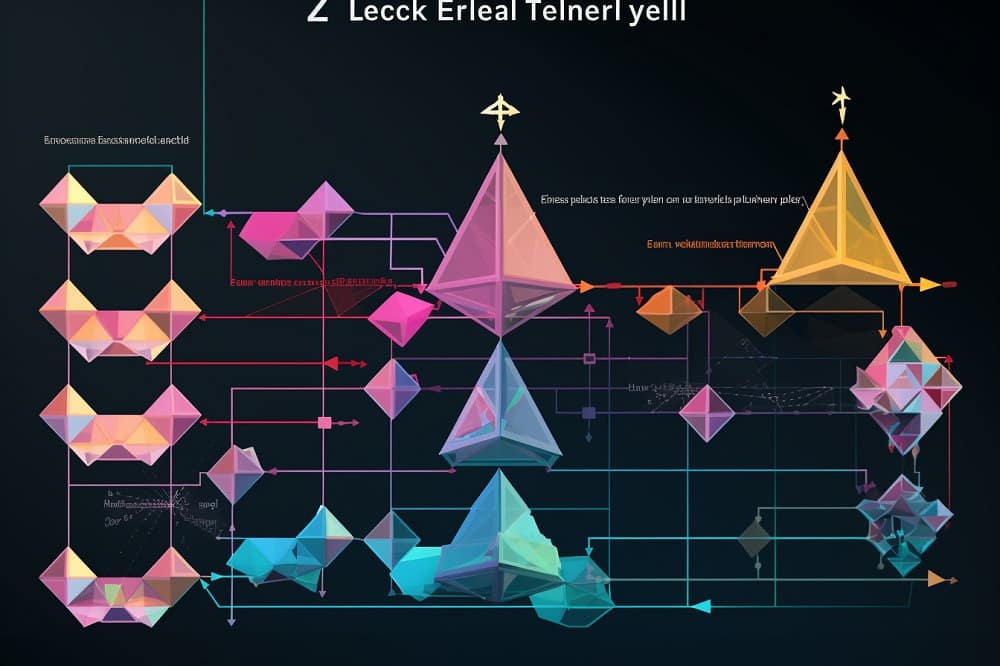As more users start using the platform, it will be interesting to see whether the Hedera Hashgraph can handle thousands of user transactions without performance degradation.
The digital world is immense, with various ledgers. While such ledgers are blockchain-based, many suffer from inefficiencies, especially slow transaction speed.
Thus, Hedera Hashgraph offers the ideal solution to these issues. It is an advanced blockchain that promises speed, security, and fairness.
This guide examines what Hedera Hashgraph is, how it works, its key features, the challenges ahead, and what the future holds for its native cryptocurrency, HBAR.
Introduction to HBAR
HBAR is Hedera Hashgraph’s native cryptocurrency; it fuels all the transactions on the platform. HBAR is the currency the network uses to pay community members for services from file storage and the execution of smart contracts to the creation of tokens.
Beyond its transactional purpose, HBAR is important in maintaining the network’s security. By staking the HBAR, users are helping to keep the system’s integrity intact, and Hedera remains decentralized and efficient.
Understanding the Hedera Hashgraph Network
At its core, Hedera Hashgraph is a decentralized network of nodes that collaborate to validate transactions and update the public ledger. The consensus algorithm driving the platform, called Hashgraph, is built to ensure transaction speeds are faster with minimal latency — a significant improvement over the traditional blockchain model.
Hedera’s consensus method is called “gossip about gossip,” permitting nodes to gossip with each other regarding the transactions they have witnessed. The process ensures that all nodes agree on the system’s state without going through the energy-intensive proof-of-work process utilized by some other blockchains.
Thus, Hedera can maintain fast, secure, and efficient transaction processing. The Hedera Hashgraph platform also provides the functionality for creating smart contracts and dApps.
Developers can thus create various applications on top of Hedera’s infrastructure, increasing its use cases.
Getting Started
Getting started with Hedera is simple. Developers can access various tools on the network, such as APIs and an SDK, to build dApps, deploy smart contracts, and issue tokens. Within the Hedera ecosystem, nodes are responsible for validating transactions.
Major companies such as IBM and LG have already started exploring Hedera’s potential in supply chain management and file storage. In daily applications, HBAR is suitable for making payments, staking purposes, and interacting with applications built on Hedera.
Anyone wishing to contribute to this must own some HBAR tokens and create a wallet compatible with the token.
Core Attributes and Advantages of the Hedera Hashgraph
The main reasons one would prefer Hedera Hashgraph over most classic blockchain systems include:
High Speed: Hedera can achieve thousands of transactions per second, while settlements are almost real-time.
Efficiency: Its unique consensus mechanism consumes minimal energy compared with proof-of-work blockchains.
Security and Flexibility: Hedera provides a suite of services, including Consensus-as-a-Service (CaaS), file storage, and identity management, secured by Hashgraph’s consensus protocol.
Moreover, Hedera SDK offers a suite of tools and libraries in various programming languages that developers can use to build smart contracts and dApps. In addition, fair and transparent HBAR governance and high compliance with regulations make it attractive to businesses and developers.
Purchasing, Storing, and Managing HBAR Tokens
HBAR is very easy to buy and store. Investors can sign up on a centralized exchange like Binance, Coinbase, or Bybit and deposit fiat money into the exchange to buy HBAR.
It is also available on Uniswap, Pancakeswap, and other decentralized exchanges, which allows HBAR transactions through platforms like MetaMask. Acquired HBAR can be stored in digital wallets or on exchanges.
Users can also stake HBAR to participate in securing the network and earning some staking rewards.
Obstacles and Criticisms
Of course, Hedera Hashgraph is not without its criticisms. Among the most fundamental issues is its governance structure.
While Hedera’s council is very diversified in composition, the centralization in the decision-making process has raised several questions about whether Hedera is decentralized, a feature so dear to many in the crypto community.
Another issue is that Hedera’s code is not open source, unlike many other blockchain projects. Furthermore, the network’s scalability has not been tested in the real world, even though it is highly scalable theoretically.
As more users start using the platform, it will be interesting to see whether the network can handle thousands of user transactions without performance degradation.
What’s Next For Hedera Hashgraph and HBAR?
The roadmap for Hedera is very promising, with many developments coming up. The network intends to introduce mirror nodes that increase transparency and sharding for better scalability.
Strategic partnerships with industry giants such as Google and IBM have positioned Hedera as an increasingly trustworthy player in the corporate world. Use cases of the platform have gradually been extended from identity management to secure micropayments, while it has immense potential in the Web3 ecosystem.
As the world moves toward more decentralized, efficient systems, Hedera could become a foundational part of the next generation of digital infrastructure.
At Tokenhell, we help over 5,000 crypto companies amplify their content reach—and you can join them! For inquiries, reach out to us at info@tokenhell.com. Please remember, cryptocurrencies are highly volatile assets. Always conduct thorough research before making any investment decisions. Some content on this website, including posts under Crypto Cable, Sponsored Articles, and Press Releases, is provided by guest contributors or paid sponsors. The views expressed in these posts do not necessarily represent the opinions of Tokenhell. We are not responsible for the accuracy, quality, or reliability of any third-party content, advertisements, products, or banners featured on this site. For more details, please review our full terms and conditions / disclaimer.

